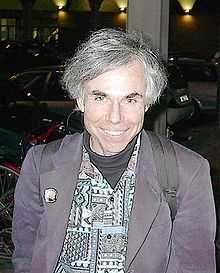Platonia dilemma
In the platonia dilemma introduced in Douglas Hofstadter's book Metamagical Themas,[1] an eccentric trillionaire gathers 20 people together, and tells them that if one and only one of them sends him a telegram (reverse charges) by noon the next day, that person will receive a billion dollars. If he receives more than one telegram, or none at all, no one will get any money, and cooperation between players is forbidden. In this situation, the superrational thing to do is to send a telegram with probability 1/20.
A similar game, referred to as a "Luring Lottery", was actually played by the editors of Scientific American in the 1980s.[2] To enter the contest once, readers had to send in a postcard with the number "1" written on it. They were also explicitly permitted to submit as many entries as they wished by sending in a single postcard bearing the number of entries they wished to submit. The prize was one million dollars divided by the total number of entries received, to be awarded to the submitter of a randomly chosen entry. Thus a reader who submitted a large number of entries increased his or her chances of winning but reduced the maximum possible value of the prize. It can be shown mathematically that one maximizes one's average winnings in this game by submitting a number of entries equal to the total number of entries of others. Of course, if others take this into account, then this strategy translates into a runaway reaction to unbounded number of entries being submitted.
According to the magazine, the superrational thing was for each contestant to roll a simulated die with the number of sides equal to the number of expected responders (about 5% of the readership), and then send "1" if you roll "1". If all contestants had followed this strategy, it is probable that the magazine would have received a single postcard, with a "1", and would have had to pay a million dollars to the sender of that postcard. Reputedly the publisher and owners were very concerned about betting the company on a game.
Although the magazine had previously discussed the concept of superrationality from which the above-mentioned algorithm can be deduced, many of the contestants submitted entries consisting of an astronomically large number (including several who entered a googolplex). Some took this game further by filling their postcards with mathematical expressions designed to evaluate to the largest possible number in the limited space allowed. The magazine was unable to tell who won, and the monetary value of the prize would have been a minuscule fraction of a cent.
See also
References
- ↑ Hofstadter, Douglas (June 1983). "Dilemmas for Superrational Thinkers, Leading Up to a Luring Lottery". Scientific American 248 (6). – reprinted in: Hofstadter, Douglas (1985). Metamagical Themas. Basic Books. pp. 737–755. ISBN 0-465-04566-9.
- ↑ Hofstadter, Douglas (September 1983). "Irrationality Is the Square Root of All Evil". Scientific American 249 (3). – reprinted in: Hofstadter, Douglas (1985). Metamagical Themas. Basic Books. pp. 756–766. ISBN 0-465-04566-9.
Sources
- William Poundstone, Prisoner's Dilemma, Doubleday, NY 1992, pp. 272-276.
- Social Dilemma Games and Puzzles By Leon Felkins, written 3/10/96, Last revision on 1/8/10
| |||||||||||||||||
